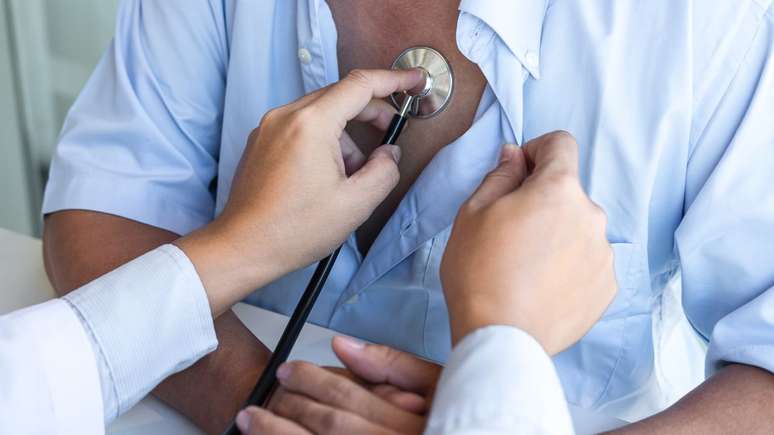Study shows this stereotype exists, but it’s different for bisexual women
html[data-range=”xlarge”] figure image img.img-a5b51ef948a9d556aa251484a510513d0dj2e39b { width: 774px; height: 332px; }HTML[data-range=”large”] figure image img.img-a5b51ef948a9d556aa251484a510513d0dj2e39b { width: 548px; height: 235px; }HTML[data-range=”small”] figure image img.img-a5b51ef948a9d556aa251484a510513d0dj2e39b, html[data-range=”medium”] figure image img.img-a5b51ef948a9d556aa251484a510513d0dj2e39b { width: 564px; height: 242px; }HTML[data-range=”small”] .article__image-embed, html[data-range=”medium”] .article__image-embed {width: 564px; margin: auto 0 30px; }
According to research recently published in the journal, stereotypes surrounding bisexual individuals vary by gender Social, psychological and personality sciences.
Bisexual men are stereotyped more closely than gay men, but this is not the case for bisexual women.
In other words, people tend to think that bisexual men are more like gay men, while bisexual women are not seen as similar to lesbian women.
These perceptions, in turn, are tied to identity-denying beliefs about bisexuality.
How do people perceive bisexuals?
While individuals from sexual minorities share common challenges, different subgroups of the LGBTQIAP+ community face very different obstacles.
Therefore, the goal of the current study was to better understand the differences in how bisexual individuals are perceived, as explained by study author Emma McGorray, a doctoral candidate at Northwestern University in the United States. See her comment:
I became interested in this topic because I have noticed that there seems to be a belief in everyday life and in the media that bisexual men are “actually gay” and bisexual women are “actually straight”. I wanted to understand to what extent people hold these beliefs and what underlying stereotypes might be connected to them.”
Emma and fellow researcher Christopher Petsko conducted three experiments involving a total of 1,149 participants. The tests aimed to examine how stereotypes of sexual orientation categories (gay, bisexual, heterosexual) vary according to the gender of the evaluated targets.
first experiment
In Experiment 1, participants were given a list of characteristics and asked to select the ten they felt were stereotypes from randomly assigned target groups (for example, gay, bisexual, or heterosexual men and women).
The researchers wanted to assess the extent to which stereotypes selected for bisexuals overlapped with those for gay and straight individuals, with variations based on gender.
The result is that participants stereotyped bisexual men as having characteristics more similar to those of gay men, but the same was not observed for bisexual women, in relation to heterosexual women.
second experiment
Recognizing that the checklist method can limit participants’ responses, in Experiment 2 the team allowed participants to freely list the stereotypes that came to mind when thinking about target groups.
Participants were asked to provide five characteristics that were part of the current cultural stereotype of different sexual orientations and gender groups. The results of this experiment were very similar to those of the first.
third experiment
In Experiment 3, participants rated bisexual men or women based on the extent to which they believed they possessed the stereotypical “gay” and “straight” attributes identified in previous experiments.
The researchers then assessed whether confirming these stereotypes involved endorsing identity-denying beliefs, such as “bisexual men are gay at heart” or “bisexual women are straight at heart.”
The researchers found that, yes, the tendency to stereotype bisexual men as having clearly “gay” attributes predicted identity-denial beliefs such as “he’s gay, deep down.”
Impact on well-being and relationships
According to the researchers, there is scientific evidence that this type of belief can have negative effects on the well-being, and even health, of bisexual people. Therefore, it is important to carry out this type of study.
It is worth mentioning that the majority of study participants came from only one country (USA). Furthermore, all were recruited through the Internet. Therefore, future research on the topic must include a wider audience and seek to explore the reasons behind these stereotypes. The author also points out that it’s important to explore the implications of all of this for bisexual romantic relationships.
Source: Terra
Ben Stock is a lifestyle journalist and author at Gossipify. He writes about topics such as health, wellness, travel, food and home decor. He provides practical advice and inspiration to improve well-being, keeps readers up to date with latest lifestyle news and trends, known for his engaging writing style, in-depth analysis and unique perspectives.





![Tomorrow belongs to us in advance: New novel Seth! … what awaits you for a week until August 25, 2025 [SPOILERS]L Tomorrow belongs to us in advance: New novel Seth! … what awaits you for a week until August 25, 2025 [SPOILERS]L](https://fr.web.img5.acsta.net/img/02/49/0249aafc9fa4e22742826bf6d981c8c3.jpg)


